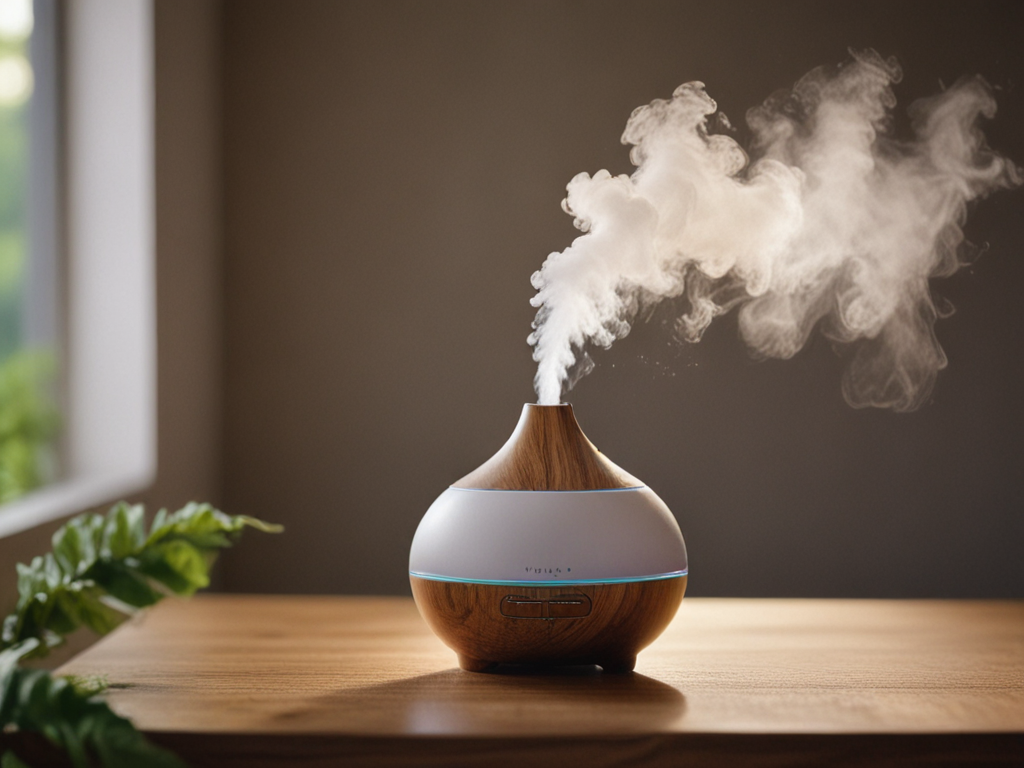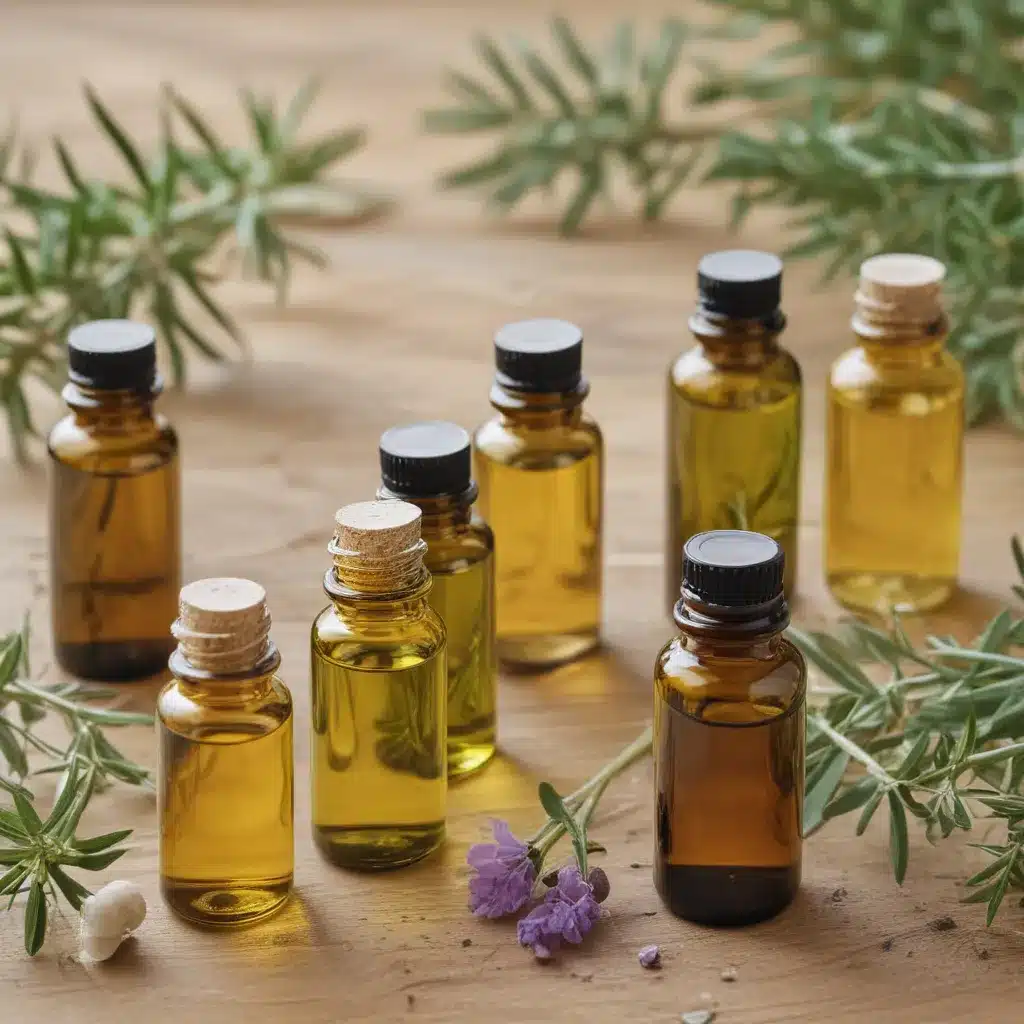
When it comes to selecting the ideal diffuser, envision standing in a room filled with the gentle mist of essential oils, each method offering distinct advantages. Nebulizing and ultrasonic diffusers both have their merits, from efficiency to aesthetics. Understanding the intricacies of how these diffusers operate and their impact on essential oil consumption and noise levels is important. But, how do they differ regarding price and overall user experience? Let’s dissect these aspects to make an informed decision on enhancing your space and well-being.
Pros and Cons of Nebulizing Diffusers
When comparing nebulizing diffusers to ultrasonic diffusers, it is important to take into account their distinct advantages and disadvantages. Nebulizing diffusers are known for their efficiency at dispersing essential oils. These diffusers do not require water to operate, unlike ultrasonic diffusers, which use water to create a mist. This results in nebulizing diffusers consuming less oil per use compared to ultrasonic diffusers that require a constant supply of water.
Nebulizing diffusers are preferred by many for their ability to disperse essential oils in their purest form without altering their chemical composition. This makes them ideal for therapeutic purposes as they deliver a more potent aroma. However, due to their direct method of diffusing oils, nebulizing diffusers can sometimes be too strong for sensitive individuals or small spaces.
Concerning oil consumption, nebulizing diffusers are more efficient as they do not dilute the essential oils with water. This leads to a more potent aroma and prolonged use of the oils. On the other hand, ultrasonic diffusers use water to disperse the oils, which can affect the strength and longevity of the scent. Additionally, the mist produced by ultrasonic diffusers can increase the humidity in the room, which may be beneficial in dry environments but could be excessive in already humid conditions.
Pros and Cons of Ultrasonic Diffusers
Ultrasonic diffusers utilize water to disperse essential oils, creating a fine mist for aromatic diffusion.
- Noise levels comparison: Ultrasonic diffusers are generally quieter compared to nebulizing diffusers, making them ideal for use during sleep or work.
- Cleaning techniques: Cleaning ultrasonic diffusers is relatively easy; a simple mixture of water and vinegar can effectively remove oil residues.
- Aroma diffusion efficiency: Ultrasonic diffusers excel at dispersing essential oils throughout a room, providing consistent and long-lasting fragrance.
- Maintenance costs: These diffusers are usually more affordable upfront and require less maintenance, making them cost-effective in the long run.
I appreciate the quiet operation of ultrasonic diffusers, allowing me to enjoy the benefits of essential oils without disturbing my surroundings. Cleaning them is a breeze, ensuring that I can quickly switch between different oils without worrying about lingering scents. The efficient diffusion of aromas throughout my space creates a soothing atmosphere, perfect for unwinding after a long day. Additionally, the low maintenance costs make ultrasonic diffusers a practical choice for those looking to incorporate aromatherapy into their daily routine without breaking the bank.
Nebulizing Diffusers: How They Work
Utilizing pressurized air to atomize essential oils, nebulizing diffusers disperse pure fragrance particles into the air for efficient and potent aromatherapy benefits. Nebulizing diffusers are known for their energy efficiency and effective scent dispersion techniques. These devices work by breaking down essential oils into tiny particles without the use of heat or water, allowing the oils to be released in their purest form for maximum therapeutic benefits.
| Nebulizing Diffusers | Features |
|---|---|
| Energy Efficiency | Atomizes oils without heat |
| Scent Dispersion | Releases pure oil particles |
| Aromatherapy Benefits | Provides potent fragrance |
| Easy to Clean | Minimal maintenance required |
| Adjustable Settings | Control intensity of scent |
The energy efficiency of nebulizing diffusers makes them a popular choice for those seeking a more potent and long-lasting aroma experience. By utilizing pressurized air to break down essential oils into fine particles, these diffusers vital that the therapeutic properties of the oils remain intact. The precise scent dispersion techniques employed by nebulizing diffusers make them ideal for individuals looking to create a calming or revitalizing atmosphere in their living or workspaces.
Ultrasonic Diffusers: How They Work
Ultrasonic diffusers operate by using ultrasonic vibrations to break down essential oils into a fine mist that is then released into the air. The benefits of ultrasonic diffusers include preserving the therapeutic properties of the essential oils and adding moisture to the air, which can be particularly beneficial in dry environments. Understanding how ultrasonic diffusers work and their advantages can help in making an informed decision when choosing the right diffuser for your needs.
Ultrasonic Diffusers Operation
How do these diffusers utilize vibrations to break down essential oils into a fine mist for dispersion into the air? Ultrasonic diffusers operate by emitting high-frequency sound waves that agitate the water and essential oil mixture, breaking it down into small particles that are released as a mist. Here are some key points about how ultrasonic diffusers work:
- Ultrasonic waves create vibrations that atomize the water and essential oils.
- The mist produced is cool and gentle, preserving the therapeutic properties of the oils.
- These diffusers are energy-efficient and quiet during operation.
- Ultrasonic diffusers also act as humidifiers, adding moisture to the air for added comfort.
Benefits of Ultrasonic Diffusers
One can appreciate the efficiency and quiet operation of ultrasonic diffusers, which not only atomize essential oils for dispersion but also serve as humidifiers to enhance air quality. Ultrasonic diffusers offer a range of benefits, including aesthetic design options that can complement any room decor. Additionally, they provide health benefits by releasing a fine mist of water and essential oils, promoting relaxation and potentially aiding in respiratory health. The ultrasonic vibrations break down the essential oils into tiny particles, making them easier to inhale. This process helps to purify the air while also dispersing the therapeutic properties of the oils. Overall, ultrasonic diffusers are a versatile and stylish way to enjoy the benefits of aromatherapy.
| Benefits of Ultrasonic Diffusers | |||||
|---|---|---|---|---|---|
| Efficient operation | Quiet | Aesthetic design | Health benefits | Humidification | Air purification |
Nebulizing Diffusers’ Essential Oil Consumption
When considering Nebulizing Diffusers’ Essential Oil Consumption, it is important to analyze Oil Efficiency Comparison, Aroma Strength Control, and Environmental Impact Consideration. These factors play a significant role in determining the effectiveness and sustainability of using nebulizing diffusers. Understanding how these aspects interact can help in making informed decisions regarding essential oil consumption with this type of diffuser.
Oil Efficiency Comparison
To determine the efficiency of nebulizing diffusers with respect to essential oil consumption, one must analyze their operational principles. When comparing oil consumption efficiency and scent dispersion uniformity between nebulizing diffusers, consider the following factors:
- Oil Atomization: Nebulizers break down oils into tiny particles for best dispersion.
- Direct Airflow: The direct release of essential oils guarantees minimal wastage.
- No Water Dilution: Nebulizers do not dilute oils with water, maximizing scent potency.
- Continuous Operation: Nebulizers can run continuously, providing a constant scent without interruptions.
Aroma Strength Control
Nebulizing diffusers allow precise control over the aroma strength by regulating essential oil consumption through adjustable settings. With the ability to fine-tune the aroma intensity adjustment, users can customize the scent strength to suit their preferences accurately. This feature sets nebulizing diffusers apart, providing a tailored aromatic experience tailored to individual liking.
| Aroma Strength Level | Description |
|---|---|
| Low | Subtle and mild scent |
| Medium | Balanced and noticeable |
| High | Intense and potent aroma |
Environmental Impact Consideration
Considering the environmental impact, the essential oil consumption of nebulizing diffusers plays a crucial role in evaluating their sustainability.
- Energy efficiency comparison between nebulizing and ultrasonic diffusers can highlight the difference in power consumption.
- Environmental impact assessments should include the carbon footprint associated with producing and using nebulizing diffusers.
- Sustainability considerations should factor in the longevity of nebulizing diffusers and their impact on resource conservation.
- Evaluating essential oil consumption can provide insights into the overall efficiency and effectiveness of nebulizing diffusers in dispersing aroma.
Ultrasonic Diffusers’ Water Usage
When operating an ultrasonic diffuser, it is essential to be mindful of the amount of water being used to secure peak performance. The water consumption impact of an ultrasonic diffuser is a critical aspect to take into account. These diffusers operate by breaking down water molecules into a fine mist using ultrasonic vibrations, which is then released into the air along with the essential oils. However, excessive water usage can lead to issues such as over-humidification in a room, dilution of the essential oils, and potential damage to the diffuser itself.
In terms of maintenance cost analysis, water usage directly affects the longevity and efficiency of an ultrasonic diffuser. Using distilled water is recommended to avoid mineral buildup that can clog the device, reducing its effectiveness over time. Additionally, regularly cleaning the water tank and ensuring proper water levels are maintained can help prevent any malfunctions due to water-related issues.
To optimize the performance and lifespan of your ultrasonic diffuser, it is advisable to follow the manufacturer’s guidelines on water usage and maintenance. By being attentive to the water consumption impact and conducting a maintenance cost analysis, you can make certain that your ultrasonic diffuser operates at its best, providing you with the desired aromatherapy benefits efficiently and effectively.
Nebulizing Diffusers’ Aromatherapy Benefits
Operating an ultrasonic diffuser efficiently involves being mindful of water usage; now, let’s explore the aromatherapy benefits provided by nebulizing diffusers.
- Pure Essential Oils: Nebulizing diffusers use pure essential oils without dilution, ensuring maximum therapeutic benefits for the user.
- Strong Aromas: Nebulizers disperse essential oils in concentrated bursts, creating a potent aroma that can fill a room quickly.
- Health Effects: The direct inhalation of undiluted essential oils from nebulizers can have various health effects, such as boosting immunity and improving respiratory function.
- Customizable Intensity: Nebulizing diffusers allow users to adjust the intensity of the aroma by controlling the amount of oil released, offering a personalized aromatherapy experience tailored to individual preferences.
Nebulizing diffusers are renowned for their efficiency in delivering the full benefits of essential oils. The therapeutic benefits of these diffusers are not only aromatic but also potentially beneficial to one’s overall well-being. By harnessing the power of pure essential oils, nebulizing diffusers offer a holistic approach to aromatherapy that can enhance both physical and emotional health.
Ultrasonic Diffusers’ Humidifying Benefits
Ultrasonic diffusers provide humidifying benefits by emitting a fine mist of water and essential oils into the air. This process not only enhances the atmosphere regarding aroma but also increases the moisture content, which can be particularly beneficial in dry environments. The humidifying effect can help alleviate issues such as dry skin, sinus congestion, and dry throat.
| Humidifying Benefits | Description |
|---|---|
| Moisturizes the Air | Increases humidity levels, improving overall air quality. |
| Alleviates Dryness | Helps combat dry skin, lips, and throat. |
| Sinus Relief | Aids in relieving sinus congestion and discomfort. |
Additionally, the integration of essential oils in the mist can enhance the overall experience by providing both aromatherapy benefits and potentially boosting mood and relaxation. However, it is essential to monitor the consumption of essential oils to make sure that they are used safely and effectively. Excessive use may not only be wasteful but could also lead to overpowering scents which may cause discomfort. Maintaining a balance in essential oil consumption is key to maximizing the benefits of ultrasonic diffusers without overwhelming the senses.
Nebulizing Diffusers’ Maintenance Requirements
To maintain peak performance, nebulizing diffusers require regular cleaning and upkeep. Here are some maintenance tips and a troubleshooting guide to make sure your nebulizing diffuser functions at its best:
- Regular Cleaning: Clean the glass nebulizer and the nozzle with isopropyl alcohol or a mixture of water and vinegar to prevent clogs and buildup of essential oils.
- Changing Essential Oils: Use high-quality essential oils and avoid thick oils that can clog the diffuser. Change oils regularly to prevent residue buildup.
- Checking Airflow: Make sure the air intake is not blocked by dust or debris. Clean the air vents to maintain proper airflow for effective diffusion.
- Inspecting Nebulizer Performance: If you notice a decrease in mist output or irregular diffusion patterns, check for any blockages in the glass nebulizer or the air tubes.
Ultrasonic Diffusers’ Cleaning Tips
When cleaning ultrasonic diffusers, I find using vinegar effective due to its natural cleaning properties. Establishing a regular maintenance routine helps prevent buildup and guarantees peak performance. Utilizing gentle cleaning methods safeguards the delicate components of the diffuser.
Vinegar for Cleaning
Using vinegar is an effective method for cleaning ultrasonic diffusers. When it comes to maintaining your diffuser, here are some tips to guarantee it stays in top condition:
- Vinegar Benefits: Vinegar helps break down oils and residue without harming the diffuser.
- Alternatives: If vinegar isn’t your preference, citric acid or rubbing alcohol are viable alternatives.
- Vinegar DIY Solutions: Create a cleaning solution by mixing equal parts water and vinegar.
- Thorough Cleaning: Remember to clean all parts of the diffuser, including the ultrasonic plate and water tank.
Regular Maintenance Routine
For effective maintenance of ultrasonic diffusers, a consistent cleaning regimen is essential to guarantee performance and longevity. Cleaning frequency is crucial to prevent mineral buildup and make sure proper functioning. I recommend cleaning your diffuser after each use by emptying any remaining water and wiping it dry. For a more thorough cleaning, it is advisable to use a mixture of water and white vinegar once a week to remove any stubborn residue. If the diffuser is not misting properly, try cleaning the ultrasonic plate with a cotton swab dipped in vinegar to dislodge any debris. Regular maintenance and following these troubleshooting tips will help keep your ultrasonic diffuser running smoothly.
Gentle Cleaning Methods
To maintain the performance and longevity of ultrasonic diffusers, incorporating gentle cleaning methods is crucial.
- Use a mixture of water and white vinegar to clean the tank and nebulizer.
- Gently wipe the diffuser with a soft cloth to prevent damaging delicate parts.
- Avoid using harsh chemicals that can leave residue and impact the diffuser’s functionality.
- Opt for eco-friendly cleaning solutions to minimize environmental impact.
These gentle cleaning methods not only keep your ultrasonic diffuser in top condition but also contribute to a sustainable lifestyle. Remember, a well-maintained diffuser guarantees a consistent and pleasant aromatic experience.
Nebulizing Diffusers’ Noise Levels
Typically, nebulizing diffusers operate at noise levels below 40 decibels. When it comes to choosing a diffuser, noise levels can play an important role in your decision-making process. Nebulizing diffusers are known for their quiet operation, making them a popular choice for those who prefer a peaceful environment while enjoying the benefits of aromatherapy.
To give you a better idea of the noise levels you can expect from nebulizing diffusers, here is a comparison table showcasing their decibel ranges:
| Nebulizing Diffuser Model | Noise Level (in decibels) |
|---|---|
| Model A | Below 30 dB |
| Model B | 35 dB |
| Model C | 38 dB |
For individuals sensitive to noise or those who use diffusers in spaces where silence is essential, opting for a nebulizing diffuser with lower decibel levels can enhance the overall experience. Additionally, incorporating soundproofing techniques or placing the diffuser on a soft surface can further reduce any operational noise, ensuring a peaceful ambiance.
When seeking a silent diffuser option, nebulizing diffusers are a favorable choice due to their inherently quiet operation. By selecting a model with lower noise levels and implementing noise reduction methods, you can create a serene atmosphere perfect for relaxation and unwinding.
Ultrasonic Diffusers’ Noise Levels
When evaluating ultrasonic diffusers’ noise levels, it is important to factor in their operational sound output for a peaceful aromatherapy experience.
-
Noise Reduction Techniques:
Ultrasonic diffusers often incorporate noise reduction techniques such as sound-dampening materials or advanced vibration control mechanisms to minimize operational noise. -
Quiet Operation Preferences:
Consumers with a preference for quiet diffusers should look for models designed specifically for low noise emission, ensuring a tranquil environment during aromatherapy sessions. -
Placement Considerations:
Placing the ultrasonic diffuser on a stable surface can help reduce vibrations and subsequently lower the overall operational noise level. -
Regular Maintenance:
Proper maintenance of the ultrasonic diffuser, including cleaning and ensuring all components are intact, can prevent unnecessary noise caused by malfunctioning parts.
Considering noise levels is essential when selecting an ultrasonic diffuser, especially for those who prioritize a serene atmosphere during aromatherapy sessions. By opting for models that incorporate noise reduction techniques and ensuring regular maintenance, users can enjoy the benefits of essential oils without disruptions from excessive operational sounds.
Nebulizing Diffusers’ Price Range
When considering nebulizing diffusers’ price ranges, it’s important to weigh the cost against the value they offer. Understanding the cost comparison and the value for money these diffusers provide can be critical in making an informed decision. Let’s analyze the affordability and benefits in relation to these nebulizing diffusers.
Cost Comparison
In considering the cost comparison between nebulizing diffusers, it is essential to note the price range can vary considerably based on factors such as brand, features, and quality. When looking at nebulizing diffusers’ prices, keep in mind:
- Initial cost can be higher than other types of diffusers.
- Higher quality nebulizing diffusers might be pricier but offer better durability.
- Additional features like timer settings or LED lights can increase the price.
- Cheaper nebulizing diffusers may compromise on materials and functionality.
Understanding the cost efficiency comparison and viewing a nebulizing diffuser as a long-term investment is important for making an informed purchase decision.
Value for Money
Moving from the cost comparison aspect, let’s now assess the value proposition offered by different price ranges of nebulizing diffusers. When considering value for money, it’s essential to weigh the initial investment against long-term benefits. Higher-priced nebulizing diffusers often come with advanced features like timer settings, adjustable mist intensity, and larger coverage areas. These premium options may offer more durability and efficiency, making them a worthwhile long-term investment. On the other hand, budget-friendly nebulizing diffusers can still provide effective aromatherapy, making them suitable for those on a tighter budget. Ultimately, the value comparison between different price ranges depends on individual preferences and needs. Consider how often you’ll be using the diffuser and what features are essential for your aromatherapy experience.
Ultrasonic Diffusers’ Price Range
I will outline the price range of ultrasonic diffusers to provide a clear understanding of their affordability. When contemplating ultrasonic diffusers, there are various price points to accommodate different budgets. Here are some key pricing categories to take into account:
-
Budget-Friendly Options: These ultrasonic diffusers are typically priced between $15 and $30. They offer basic functionalities like diffusing essential oils and simple design features. Despite their lower price, they can still be effective in dispersing essential oils into the air.
-
Mid-Range Selections: Falling in the range of $30 and $70, these diffusers offer more advanced features such as larger water tank capacities, longer run times, and additional lighting options. They strike a good balance between affordability and functionality.
-
High-End Models: Priced between $70 and $100 or more, these ultrasonic diffusers are equipped with premium features like remote controls, multiple misting modes, larger coverage areas, and elegant designs. They are ideal for those seeking a luxurious aromatherapy experience.
-
Affordable Alternatives: Some brands offer refurbished or discounted ultrasonic diffusers ranging from $20 to $50. While these may have minor cosmetic flaws, they still function effectively, providing a more cost-effective option for those on a tighter budget.
Conclusion
After weighing the pros and cons of nebulizing and ultrasonic diffusers, the decision ultimately comes down to personal preference. Both types have their advantages and drawbacks, so it’s important to contemplate factors like essential oil consumption, noise levels, and price range. Whichever diffuser you choose, rest assured that you’ll be able to enjoy the benefits of aromatherapy in your home. Happy diffusing!





















